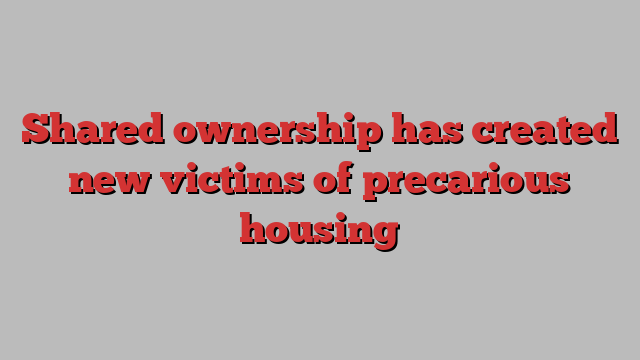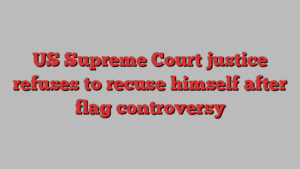
Stay informed with free updates
Simply sign up to the UK property myFT Digest — delivered directly to your inbox.
The writer is a journalist specialising in social affairs
Reeling from the impact of the Grenfell Tower tragedy and the still-unfolding damp and mould scandal, social landlords may be breathing a sigh of relief this week at the prospect of a new, more sympathetic government. They would be foolish to relax. Public scrutiny is likely to return as another crisis heads towards them: the desperate plight of shared owners.
Shared owners tend to be lower-middle income families. Priced out of the mainstream housing market, they buy a share of a property (usually less than 50 per cent of its value, raising a deposit of usually between 5 and 10 per cent of that share’s value) and rent the remainder from a housing association. The product was designed more than three decades ago to meet the needs of low-paid key workers, such as teachers and nurses, in Britain’s expensive cities. It worked well: as their salaries increased over time, they could “staircase” up to take full ownership of their homes. Meanwhile, the property itself rose in value. It offered a good deal compared with private renting.
In the last 20 years, things changed. As the cost of housing spiralled, with the average house price tripling between 1999 and 2019, the product became popular with a growing group of priced-out people on middle incomes. Funding for social housing from central government was cut dramatically in the years since 2010, forcing housing associations to be creative in finding ways to house the poorest families. They did it by building shared ownership homes and channelling the profits back into social housing. They were balancing their books on the backs of the not-quite-poor.
Because when it goes wrong, shared ownership is a very bad deal. Shared owners now face a triple threat to their finances, placing many in a desperate position. Higher mortgage payments are compounded by housing associations rapidly increasing rents on their portion of the property — linked to the consumer price index, which has shot up in the last two years. In the wake of the building safety crackdown sparked by the Grenfell fire, service charges for building maintenance (including remediation on cladding, or 24-hour security guards) have also rocketed.
The shared ownership agreement requires a buyer to take on the maximum equity they can afford when assessed for eligibility. The day they complete and collect their keys, they are already financially stretched. No shared owner enters the agreement with the capacity for rapid and vertiginous growth in monthly housing costs. Yet one shared owner I interviewed in east London described how their service charge had almost doubled since signing her agreement at the end of 2018. Meanwhile, her rent has risen from £630 to £883; her mortgage repayments have also doubled. Her total monthly repayments are now more than £2,000. They are stuck in a building yet to have cladding fully removed — meaning the lease cannot be extended and the property cannot be remortgaged.
Many shared owners now feel far worse off than in private rentals, even though in London rents have risen by 7 per cent in the last year. They are desperate to get out, but even many who own flats in blocks without issues around cladding or fire safety say they cannot find a buyer. The combination of house price inflation and rents that make saving for a deposit unthinkable has pushed even shared ownership out of reach of the lower-middle income market. The ongoing political battle over the future of leasehold has only added to the uncertainty for prospective buyers.
In March, a long-running select committee inquiry finally reported: MPs concluded that shared ownership was now failing to provide an affordable route to home ownership. Worse than that, it has become a form of financial entrapment. Housing associations and successive governments should be challenged about their role in creating it.

